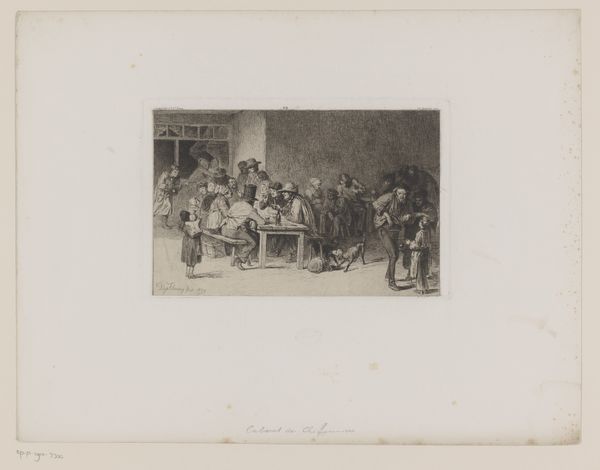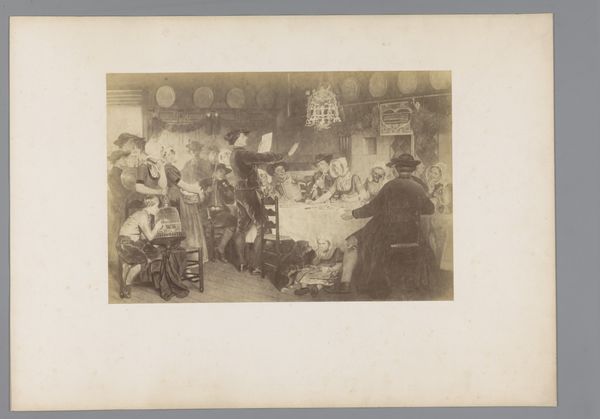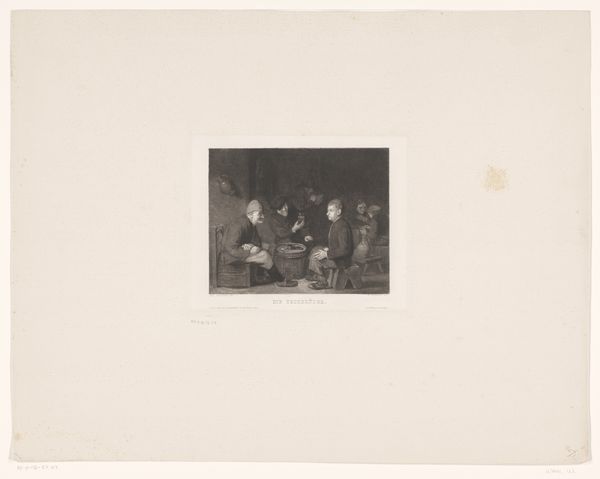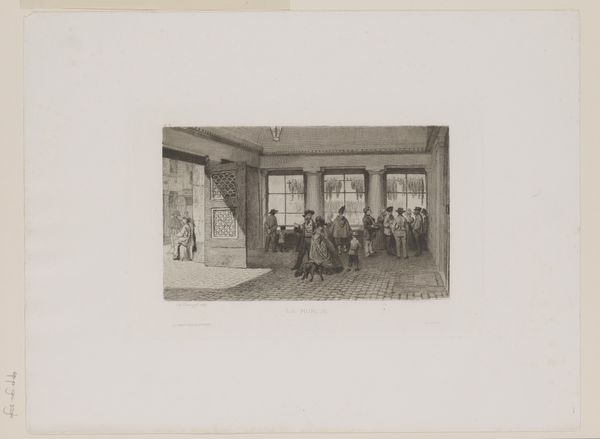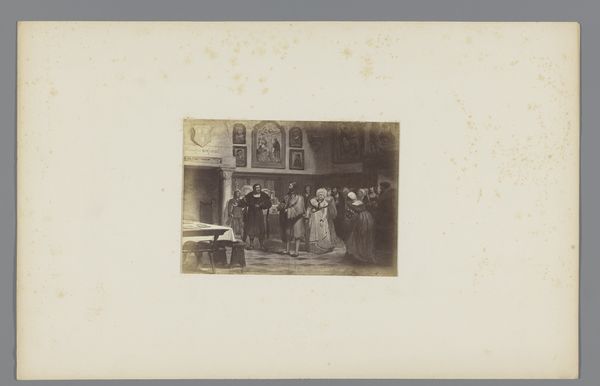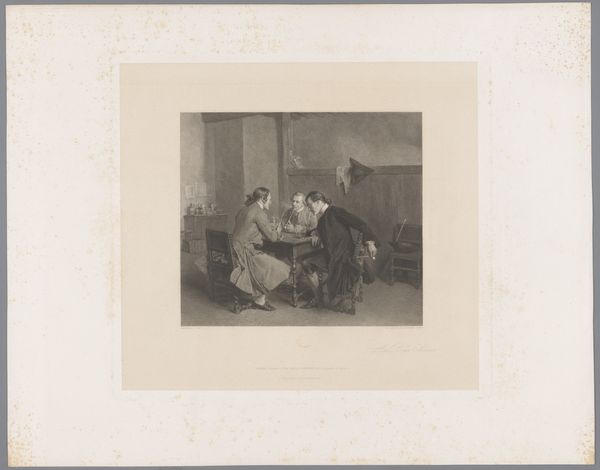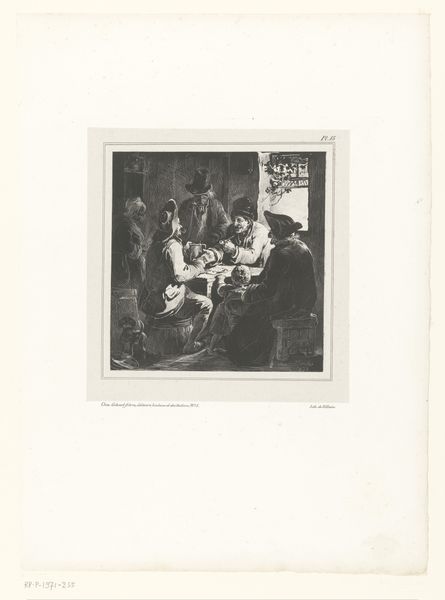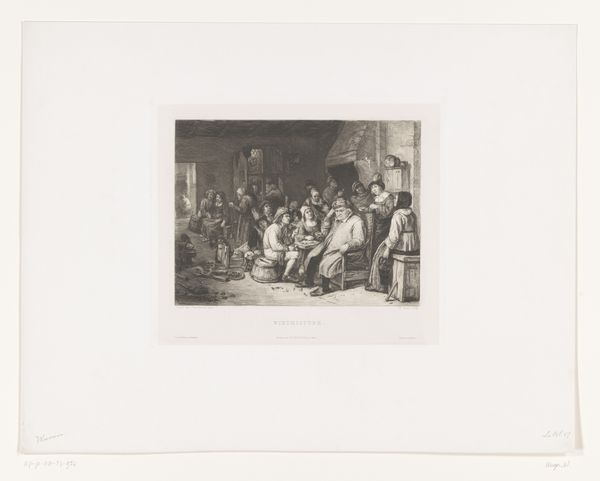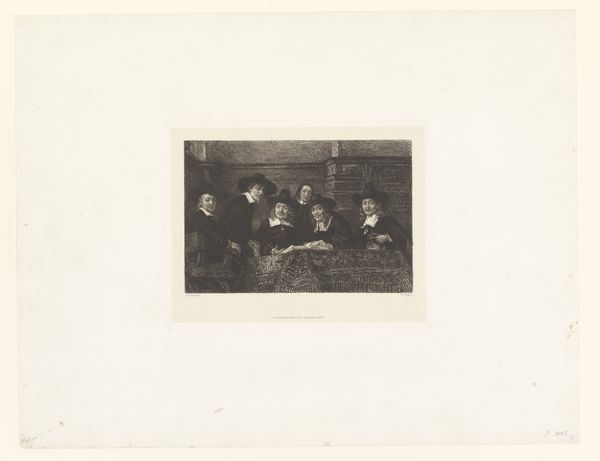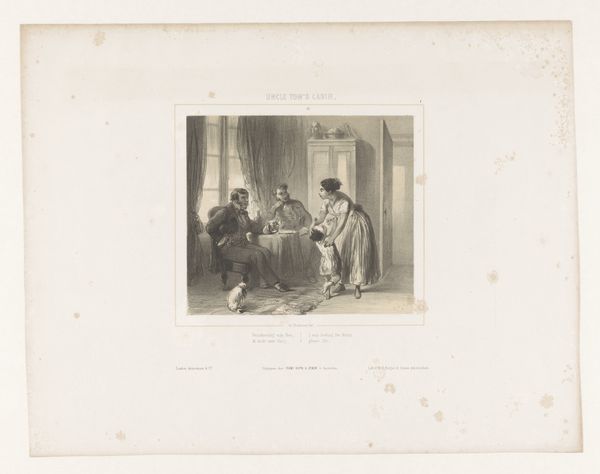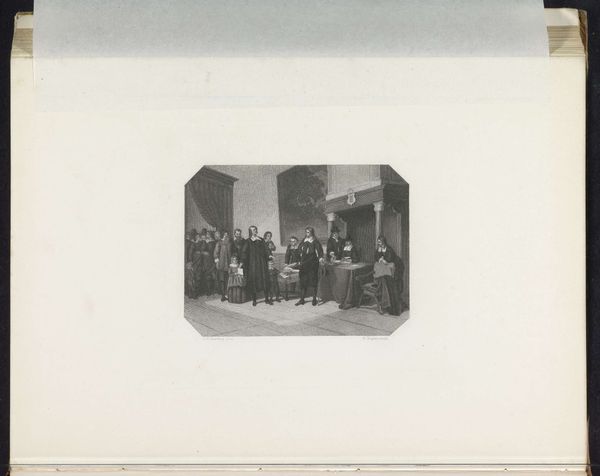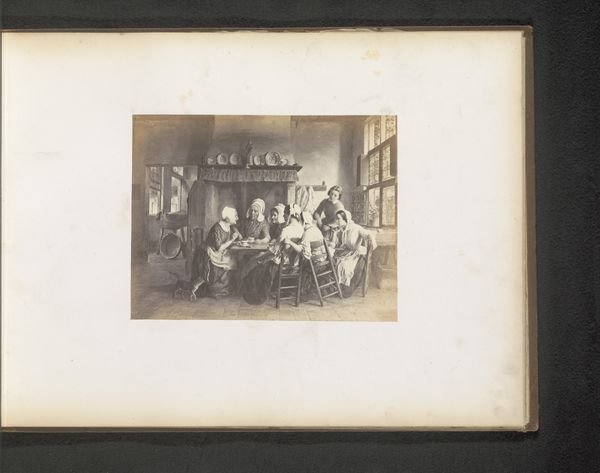
print, etching
#
portrait
# print
#
etching
#
genre-painting
#
academic-art
#
realism
Dimensions: height 156 mm, width 237 mm
Copyright: Rijks Museum: Open Domain
Curator: Here we have "Zittende mensen bij een kerkdienst", which translates to "Seated People at a Church Service," an etching from 1880 by Antonio Piccinni. Editor: My first impression is one of quiet solemnity. The subdued palette, the posture of the figures—it speaks volumes about societal expectations for women in religious spaces during that time. Curator: Absolutely. And I think we can extend that consideration. Etchings, especially those depicting everyday scenes like this one, were often circulated as prints in newspapers and magazines. They allowed for the wider dissemination of particular views of life. In this case, the piece acts almost like a photograph. Editor: True, these women are placed in an institutional framework and observed. The image evokes themes that are common across 19th century Western representations of women. It depicts piety, mourning, but also possibly boredom and a restricted life. It raises interesting questions about female agency. Curator: And how does this fit into the trajectory of Academic Art that influenced this work? The attention to detail, the realism – all reflect prevailing aesthetic values. Consider also the composition: the women are clearly delineated, each rendered with distinctive features and garb. Their class status seems equally evident. Editor: And what’s the role of religious institutions, depicted in such artworks? Churches not only provided a spiritual framework, but reinforced social norms and hierarchies. Consider, who's present and seemingly emphasized in the work, versus those conspicuously absent, and what power dynamics do you start seeing? Curator: Those are excellent points. The setting becomes less a place of solace and more a stage upon which roles are performed. In many ways the artist is capturing, whether intentionally or not, the nuances of gender, class and even religion. It reminds me of related societal expectations outside of just the Church's parameters as well. Editor: Right. And how were women able to push against this constrained public imagery through resistance or activism during this time period? Who got to produce and circulate this type of images versus whose voices and images were suppressed? The artist had power here, so it makes sense for us to question the ethics and intention. Curator: This piece has led to many different considerations regarding social contexts, public art and art history. Thank you. Editor: Agreed, analyzing this print, it opens more doors into considerations around representation and its impacts, making visible both conscious and less conscious social frameworks.
Comments
No comments
Be the first to comment and join the conversation on the ultimate creative platform.
